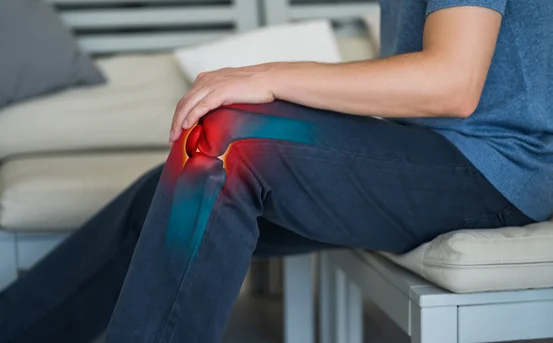Arthroscopy is a minimally invasive surgical procedure used to diagnose and treat problems inside a joint. Rather than using large incisions, arthroscopy involves inserting a tiny camera (arthroscope) and instruments through small cuts to visualize and repair joint issues. It’s commonly called “keyhole surgery” and is known for faster recovery, less pain, and smaller scars compared to open surgery.
Arthroscopy is used for various joints in the body. Each type of arthroscopic surgery targets specific problems, ranging from torn ligaments and cartilage damage to joint inflammation and instability. Knowing the different types of arthroscopy surgeries can help patients understand what to expect and which procedure may be right for their condition.
Types of Arthroscopy Surgery
-
Knee Arthroscopy :- Knee arthroscopy is one of the most frequently performed orthopedic procedures. It is used to treat common knee issues such as a torn meniscus, damaged cartilage, ligament injuries (like ACL tears), loose bone fragments, or inflamed synovial tissue. The procedure involves making two or three small incisions around the knee, inserting the arthroscope to view the inside, and then using fine surgical tools to make repairs.
Because the knee is a weight-bearing joint, timely arthroscopic treatment can restore stability, relieve pain, and improve function without the need for major open surgery.
- Shoulder Arthroscopy :- Shoulder arthroscopy is often recommended for patients with shoulder pain that doesn’t improve with medications or physical therapy. It can address problems such as rotator cuff tears, labral injuries, frozen shoulder (adhesive capsulitis), shoulder impingement, or dislocations.
During the procedure, the surgeon inserts the arthroscope through small incisions around the shoulder to remove or repair damaged tissues. Shoulder arthroscopy offers a less invasive way to improve joint movement and reduce chronic pain.
- Hip Arthroscopy :- Hip arthroscopy is a more specialized procedure but has grown in popularity, especially for younger, active individuals with hip joint issues. It’s commonly used to treat labral tears, femoroacetabular impingement (FAI), cartilage damage, and inflammation around the hip socket.
Unlike open hip surgery, hip arthroscopy allows the surgeon to preserve more of the joint and surrounding tissues. Recovery is generally quicker, and patients often return to daily activities or sports faster when compared to traditional surgery.
- Wrist Arthroscopy :- Wrist arthroscopy is performed to diagnose and treat wrist pain, ligament injuries, ganglion cysts, and cartilage damage. It is also used for patients with unexplained joint pain that does not show up clearly on X-rays or MRIs.
By using an arthroscope, surgeons can get a detailed view of the small, complex structures in the wrist and make precise repairs. This procedure is particularly useful for athletes and individuals who perform repetitive hand movements.
- Ankle Arthroscopy :- Ankle arthroscopy is helpful for treating chronic ankle pain, ligament injuries, bone spurs, loose cartilage, and joint impingement. It is also used in cases of recurrent ankle sprains or post-traumatic injuries.
Using tiny instruments, the surgeon cleans out damaged tissue, smoothens rough bone surfaces, or removes debris inside the joint. Ankle arthroscopy helps restore mobility and reduce stiffness, making it a preferred option for many active individuals.
- Elbow Arthroscopy :- Elbow arthroscopy is used to treat conditions such as tennis elbow, loose bone fragments, arthritis, and limited joint movement. The elbow is a delicate joint surrounded by nerves and blood vessels, so arthroscopy allows for precise treatment with minimal disruption.
This surgery can help relieve stiffness, restore range of motion, and prevent further joint damage, especially in people with long-standing elbow pain or injury.
Conclusion
Arthroscopy has revolutionized the way joint problems are treated. Whether it’s the knee, shoulder, hip, wrist, ankle, or elbow, arthroscopic surgery offers a safer, faster, and more effective solution for a wide range of orthopedic conditions.
If you’re experiencing joint pain or limited movement that hasn’t improved with conservative treatments, consulting an orthopedic specialist can help determine whether arthroscopy is the right path for you. With proper care and guidance, many patients return to pain-free, active lifestyles after arthroscopic surgery.























